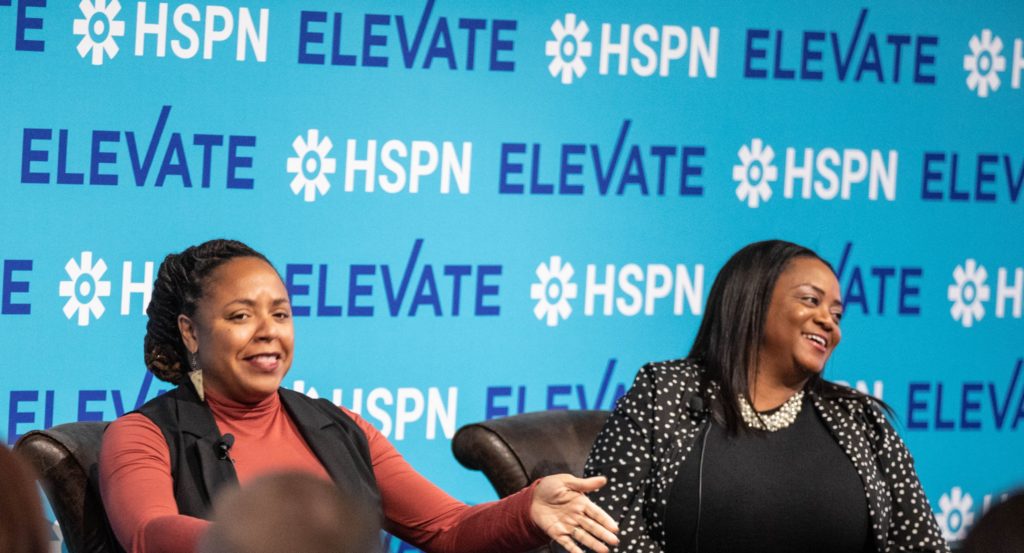Racial divides have long-plagued the hospice field, rising to heightened levels of concern amid the coronavirus pandemic and events leading to civil unrest in the last year. Though hospices have taken deeper dives into improving access to care among underserved populations and addressing diversity and equity in their organizations, much work lies ahead to create change from the inside out.
Racial-inequity issues heightening across the country, along with continued spread of a global pandemic, have increasingly brought diversity, equity and inclusion to the forefront in health care. The outbreak has illuminated an imbalance in both access and utilization to end-of-life and serious illness care.
Black or African Americans have died at 1.4 times the rate of white Americans since the pandemic’s onset in the United States, representing 15% of lives lost to COVID-19 nationwide, the U.S. Centers for Disease Control and Infection (CDC) reported. Additionally, more Native American and Latino lives have been lost to the deadly virus than white populations, according to the CDC.
Closing racial gaps in care at the end of life will take ongoing steps to create overall change. Hospices should first hone focus on diversity internally before turning these efforts externally, creating bridges to underserved communities, according to Altonia Garrett, vice president of public affairs and strategic partnerships at Capital Caring Health.
“I’ve seen companies try to go out and do African American outreach, but they don’t look inside and see how they can change,” Garrett said during the Hospice News Elevate conference. “They’re quickly ready to put out things to the community, but changing your organization is an internal, intentional culture shift that has to happen as well. Work inside first, and then you can deliver on the outside. You can’t practice what you don’t preach.”
Racial disparities have been a growing concern for hospices. More than 70% of home health organizations indicated that they would increase resources dedicated to diversity, equity and inclusion during 2021, including 22% who were hospices, according to a nationwide Axxess survey from earlier this year.
Black and Hispanic populations are less likely to receive a hospice or palliative care referral than white patients according to recent data from the U.S. Agency for Healthcare Research and Quality. A little more than 80% of hospice patients in the United States were white in 2018, while a mix of other ethnic demographics made up the remaining 20% of beneficiaries, according to the National Hospice and Palliative Care Organization.
“This perfect storm that happened last year won’t be the last,” said Nicole McCann-Davis, associate vice president of health equity and access for Seasons Healthcare Management, an AccentCare company. “Leadership development is so incredibly important to be prepared for when these situations come up in order to support their teams. Bring in a consultant to help lead those conversations and make sure people are able to better handle situations when they are prepared and they feel like you’re proactively having conversations with them.”
Hospices have increasingly dug into the roadblocks preventing access as they work to better understand the underlying issues for these disparities.
Having ongoing cultural and racially diverse conversations will be important steps toward health equity improvement, according to McCann-Davis. Leaders need to have ongoing training and education on how to best support teams on the forefront of patient care in the face of adversity, with diversity, equity and inclusion efforts that need to stretch beyond just a one-time initiative, McCann-Davis told Hospice News.
Mistrust of the health care system, provider bias and a lack of interdisciplinary cultural research have served some of the largest barriers to improving reach in underserved populations. Hospices looking to foster trust will need to ramp up staff sensitivity training, education and awareness to better understand the cultural values and roles of family members surrounding the end of life among minority groups.
Exclusively leaning on diverse staff to aid in awareness and education can be one of the largest pitfalls hospices risk in expanding diversity efforts, according to McCann-Davis. Health equity and the responsibility of closing racial gaps of care at the end of life falls on all staffing shoulders, no matter what their role may be in patient care, McCann-Davis said.
“A risk and mistake that many organizations will make is assuming that anything related to health equity — or anything related to diversity, equity and inclusion — is solely the responsibility of employees who are considered to be diverse,” said McCann-Davis. “That’s not the case. It is certainly the responsibility of all of us to contribute to these efforts to make sure that we are supporting them and that we are moving forward. We all really do impact health equity. It’s not just leaning on your diverse leaders to carry the load when they’re also trying to process things themselves while trying to support all of our staff.”
Hospices have increasingly invested in culturally competent training and education to break down barriers in staff understanding and approach to care.
Creating a safe and approachable workplace culture is crucial to building out health equity, including providing ongoing avenues of support to staff, according to Garrett. Social, mental and economic struggles are just pieces of the whole experience of both giving and receiving care, Garret stated, with these elements impacting the larger picture of overall health equity.
“Accepting that acknowledging and letting employees show up as their full selves, making it a safe place is key,” said Garrett. “Whether they’re vulnerable and going through issues — you’re here to support them in their experience. Though you may not believe it or ever had it yourself, it’s their experience. It’s being able to be a voice or springboard for staff to share and express things they’re facing as we’re building out our care and our outreach to communities.”
Companies featured in this article:
AccentCare, Axxess, Capital Caring Health, National Hospice and Palliative Care Organization, Seasons Hospice & Palliative Care



